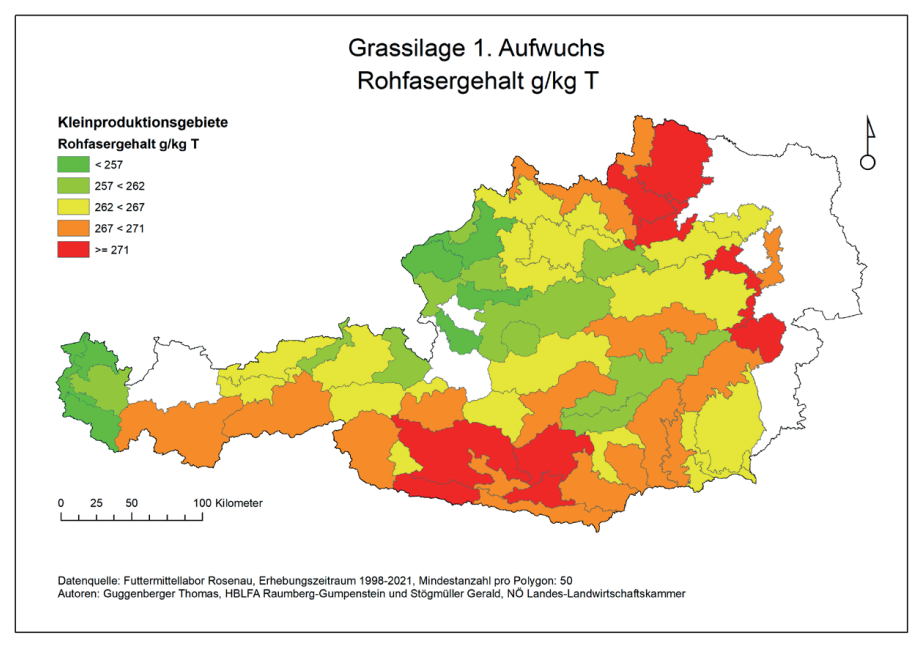Structuring the project
Energy and protein assessment great importance for a needs-based and environmentally friendly diet for agricultural animals The scientific basis for this is provided by the care recommendations of the Society for Nutritional Physiology. In order to optimally cover the nutrient requirements, a ration calculation be carried out using the company's own feed. To do this, the nutrient content of your own feed must be known. Rosenau feed laboratory and the HBLFA Raumberg-Gumpenstein have been working together from the start on questions of nutrient analysis, energy and protein assessment The focus of the joint work was the development of an automated evaluation in routine analysis.
The nutrient contents of basic feed were examined as early as 1985. It turned out that the different contents can differ depending on the growth stages, the time of harvest, the year of the test and the location. This primarily affects the factors dry matter content, crude protein, crude fiber and crude ash. As a result, the factors have a high influence on energy and various forms of carbohydrates.
In terms of temporal development, the nutrient content and feed quality have changed significantly over the last 35 years. By increasing the performance and changing the preservation methods for hay and grass silage, the proportion of canned feed that is harvested too late is decreasing. Better basic feed is the most important basis for the increasing performance of agricultural animals over the years.
In order to better illustrate the spatial development of nutrient content in small-scale production areas, these parameters were also drawn on a thematic map. For this purpose they were divided into hay, grass silage and corn silage.
From the Update Feed Value report, p. 7 to p. 47.






